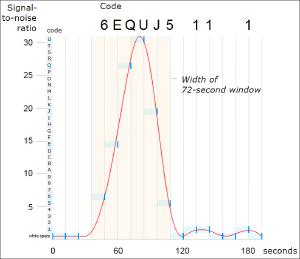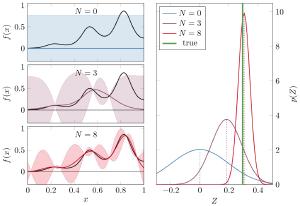Blog
Repeat Performance
21 June 2022
 Bob King/Stellarium
Bob King/StellariumIn the decades-long search for extraterrestrial intelligence, there has never been confirmed evidence of an alien signal. There have, however, been a few tantalizing mysteries. Perhaps the greatest of these is known as the Wow Signal.
 Bigear.org / NAAPO
Bigear.org / NAAPOObserved on 15 August 1977 by the Big Ear radio telescope at Ohio State University, the signal was a strong, continuous, narrow band radio signal lasting at least 72 seconds. Our knowledge of the signal is limited given the design of Big Ear. Rather than being able to track radio signals like most modern radio telescopes, Big Ear was set to a particular elevation and relied on Earth’s rotation to scan across the sky. The reason the Wow Signal lasts 72 seconds is because that’s how long it took the source to sweep across Big Ear’s observation range.
Big Ear was also a passive telescope. Astronomers simply set it up, and it would run on its own, recording the strength of signals as it goes. Because of this, the signal was only discovered days after the event when recorded observations were reviewed. By the time astronomers could go back to observe the source, the event was long over.
 Maksim Rossomakhin
Maksim RossomakhinBut despite having just one observation, the Wow Signal is considered the strongest candidate for an extraterrestrial signal. Several natural origins have been proposed, but all of them are a bit lacking. The most basic idea is that the signal was of terrestrial origin, perhaps a plane passing overhead, or a radio signal scattered off space debris. But a plane wouldn’t be in range for more than 72 seconds, and there is no record of such a flight. A scattered signal is possible, but the strength of the signal would be unusual, and the frequency of the Wow Signal is within a range where transmissions are restricted.
Several years ago it was proposed that the signal might have been caused by comets that were near the observed area of the sky, but this has since been disproven. While two comets were close to the source location, they weren’t really within the observed range. And comets aren’t likely to emit such a strong narrowband signal.
 NRAO
NRAOOne interesting aspect of the signal is that its frequency was very close to that of the so-called 21-centimeter line. This is a faint radio emission caused by neutral hydrogen in the universe. Because hydrogen is the most common element in the cosmos, any radio astronomers in the universe would make observations at that frequency. If you wanted to get the attention of alien astronomers, a strong signal near that frequency would be a good way to do it.
Given the tantalizing nature of the Wow Signal, there have been several attempts at repeat observations. Several radio telescopes have been aimed at the source over the years, but to no luck. Every observation in that area since has turned up nothing. So what’s an astronomer to do? Well, one way to tackle the problem is to look at what your observations exclude. That’s the idea behind a recent paper on the arxiv.1
In this work, the authors argue that the source could be some kind of stochastic repeater. Most repeating sources are periodic. Things like variable stars or fast radio bursts can have a predictable variability. Astronomers have considered this idea, and have made observations that rule out a source with a regular periodicity. A stochastic repeater is a bit different. Rather than having a measurable period, stochastic repeaters repeat somewhat randomly. A good example would be earthquakes. We know where they generally happen, know they will happen again, but predicting exactly when is nigh on impossible. Astrophysical processes can be stochastic in a similar way.
 Wikipedia
WikipediaOn the face of it, this seems like a silly idea. We’ve never seen the Wow Signal repeat, and we’ve proved it can’t be repeating periodically, but maybe it’s been repeating non-randomly such that we’ve never observed it. It sounds like the authors are arguing that it must be a non-random repeater because we’ve never observed it repeat. But the idea isn’t as silly as it sounds. The authors look at when an unobserved burst might have occurred, and apply Bayesian statistics to calculate when a future burst might occur.
Bayesian statistics is subtle but powerful. It’s more than just calculating the odds of a likely event. It looks at the pattern of events to predict specific outcomes. It takes into account not just how often something has occurred, but how those events changed over time. So, knowing of one burst event, and knowing when other burst events haven’t occurred, the authors calculate the times at which future events are most likely. This is good to know since we can now specifically observe the regions during the most likely event periods. If the Wow Signal was a stochastic repeater, then we’ll likely catch a new event. If we don’t see another event, we can rule out stochastic repeaters as a likely cause.
David Kipping and Robert Gray. “Could the ‘Wow’ signal have originated from a stochastic repeating beacon?” arXiv preprint arXiv:2206.08374 (2022) ↩︎